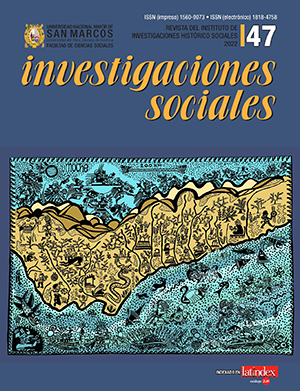Legend of Pashas. Polyphonic speech
DOI:
https://doi.org/10.15381/is.n47.23865Keywords:
Pashas legend, dicursive polyphony, toponymy, native languages, PallascaAbstract
In the legend or discursive text, the narrator becomes an enunciator, whose language results in the enunciation that is the story. The legend of Pashas, originally from the Cabana district, tells the story of a marriage alliance between a young man living in Mashgonga hill, the upper part of this town, with a young woman who lived in Llactabamba hill, the lower zone or valley; whose parents (both curacas) were enemies. This marriage, by choosing Pashas hill as their residence, an intermediate place between Mashgonga and Llactabamba, ends the enmity of their parents and gives rise to a new population. In the discursive text of this legend through multiple voices (discursive polyphony), the narrator qualifies languages, dialects, historical and cultural events that he has heard in Cabana, also reflected in place names.
Downloads
Published
Issue
Section
License
Copyright (c) 2022 María del Carmen Cuba

This work is licensed under a Creative Commons Attribution 4.0 International License.
AUTHORS RETAIN THEIR RIGHTS:
a. Authors retain their trade mark rights and patent, and also on any process or procedure described in the article.
b. Authors retain their right to share, copy, distribute, perform and publicly communicate their article (eg, to place their article in an institutional repository or publish it in a book), with an acknowledgment of its initial publication in Investigaciones Sociales.
c. Authors retain theirs right to make a subsequent publication of their work, to use the article or any part thereof (eg a compilation of his papers, lecture notes, thesis, or a book), always indicating the source of publication (the originator of the work, journal, volume, number and date).













